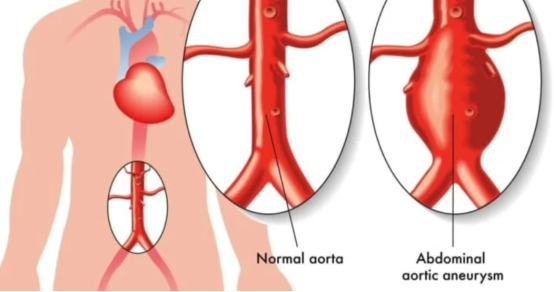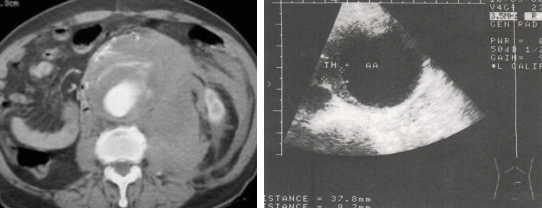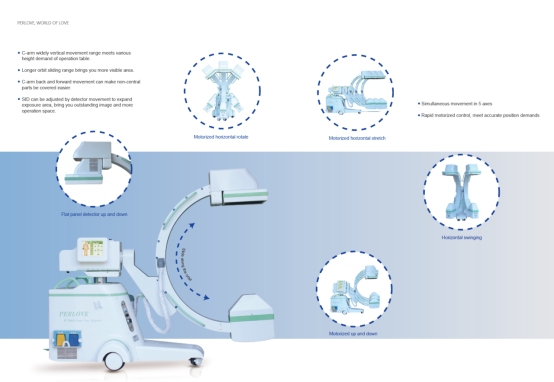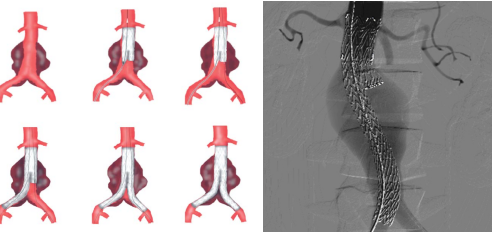News
2021-11-22 10:59:37 Views:1432
Minimally invasive surgical treatment of abdominal aortic aneurysm
Abdominal aortic aneurysm (AAA) is a localized enlargement of the abdominal aorta such that the diameter is greater than 3 cm or more than 50% larger than normal1. The aorta runs from the heart through the center of the chest and abdomen. As the largest blood vessel in human body, a ruptured AAA can cause life-threatening bleeding.

(Copyright: familydoctor.org)
Local enlargement of aorta cause an AAA
Symptoms
In most cases, AAA cause no symptoms and are found when you are being evaluated for another medical condition. However, as the abdominal aorta expands and/or ruptures, the aneurysm may become painful and lead to pulsating sensations in the abdomen or pain in the chest, lower back, legs, or scrotum.2 The bleeding can lead to a hypovolemic shock with low blood pressure and a fast heart rate. This may lead to brief passing out.3

Risk Factors
Many factors contribute to the cause of AAA. A major risk factor for the development of abdominal aortic aneurysm is smoking, and more than 90% of patients with such aneurysms have been smokers.4 Some type of inflammation caused by prolong use of alcohol and hypertension may also considered as an cause of AAA. Other genetic disorders such as Marfan syndrome and Ehlers-Danlos syndrome have as well as been strongly associated with AAA.5
Diagnosis
Ultrasonography is the primary method used for screening and is highly sensitive (95%) and specific (100%).6 CT scan is very accurate at detecting not only the AAA but also the presence of retroperitoneal hemorrhage.

Surgical treatment
Two approaches to repairing aneurysms are currently available: open repair and endovascular repair.7 An open aortic surgery (OAS) is used to treat patients with aortic aneurysms greater than 5.5 cm in diameter. During OAS, a laparotomy is performed, surgeon will use a man-made tube (called a graft) to replace the weak and bulging section of the aorta in the belly. Most people who have OAS recover well. However there is a higher morbidity and mortality than endovascular procedures for comparable segments of the aorta. Besides the risk of death, other risks and complications may also coexist.

Endovascular aneurysm repair (EVAR) is a minimally invasive approach to treat pathology of the aorta, which has developed to reduce the risks associated with open surgery. The whole procedure is carried out in a sterile environment under fluoroscopic guidance. After general anesthesia, an incision will be made through the ipsilateral (one side of the leg)femoral artery or iliac artery in the groin. A guide wire is then introduced into the artery and push it up toward the site of the aneurysm. Then a catheter will be pass over the guide wire to deliver a Y-shaped stent graft with two branches for the iliac arteries and a main trunk for the proximal aorta. By opening the stent graft, hooks are used to achieve fixation of the device and prevent migration. Once the graft is in place, blood will flow though it and not into the surrounding sac which will remove the pressure from aneurysm. Finally, catheters will be removed and incision will be closed.
Unlike OAS, most patients experienced EVAR were observed for some hours in the intermediate care unit before they went back to the outpatient clinic recovery room. After some food and some additional hours of observation, the patient will be discharged home.8

Reference
1. Kent KC (27 November 2014). "Clinical practice. Abdominal aortic aneurysms". The New England Journal of Medicine. 371 (22): 2101–8.
2. Fauci, Anthony (2008-03-06). "242". Harrison's Principles of Internal Medicine (17 ed.). McGraw-Hill Professional.
3. Spangler R, Van Pham T, Khoujah D, Martinez JP (2014). "Abdominal emergencies in the geriatric patient". International Journal of Emergency Medicine. 7 (1): 43.
4. Greenhalgh RM, Powell JT (January 2008). "Endovascular repair of abdominal aortic aneurysm". N. Engl. J. Med. 358 (5): 494–501.
5. Treska V. et al.:Aneuryzma břišní aorty, Prague, 1999, ISBN 80-7169-724-9
6. Fleming C, Whitlock EP, Beil TL, Lederle FA. Screening for abdominal aortic aneurysm: a best-evidence systematic review for the U.S. Preventive Services Task Force. Ann Intern Med 2005;142:203-11.
7. Parodi JC, Palmaz JC, Barone HD. Transfemoral intraluminal graft implantation for abdominal aortic aneurysms. Ann Vasc Surg 1991;5:491-9.
8. Lachat ML, Pecoraro F, Mayer D, et al. (November 2013). "Outpatient endovascular aortic aneurysm repair: experience in 100 consecutive patients". Ann. Surg. 258 (5): 754–8, methods 758–8.
-
2024 SHARE MORE, DO MORE丨Perlove Medical International Distributor Promotion Conference
Read More » -
CMEF Live Streaming|Perlove’s high-end DRF injects technological power into precision medicine!
Read More » -
UN and Perlove Medical Cooperated for Human Healthcare
Read More » -
Perlove Medical Dynamic Flat DR injects new vitality into plateau medical services
Read More » -
China first!Perlove Medical's PLD9600 Series makes history as the first domestic DRF to obtain EU CE Certification
Read More » -
Perlove Medical's dynamic flat panel DRF successfully installed in Pakistan, Product quality proves reliability.
Read More »





